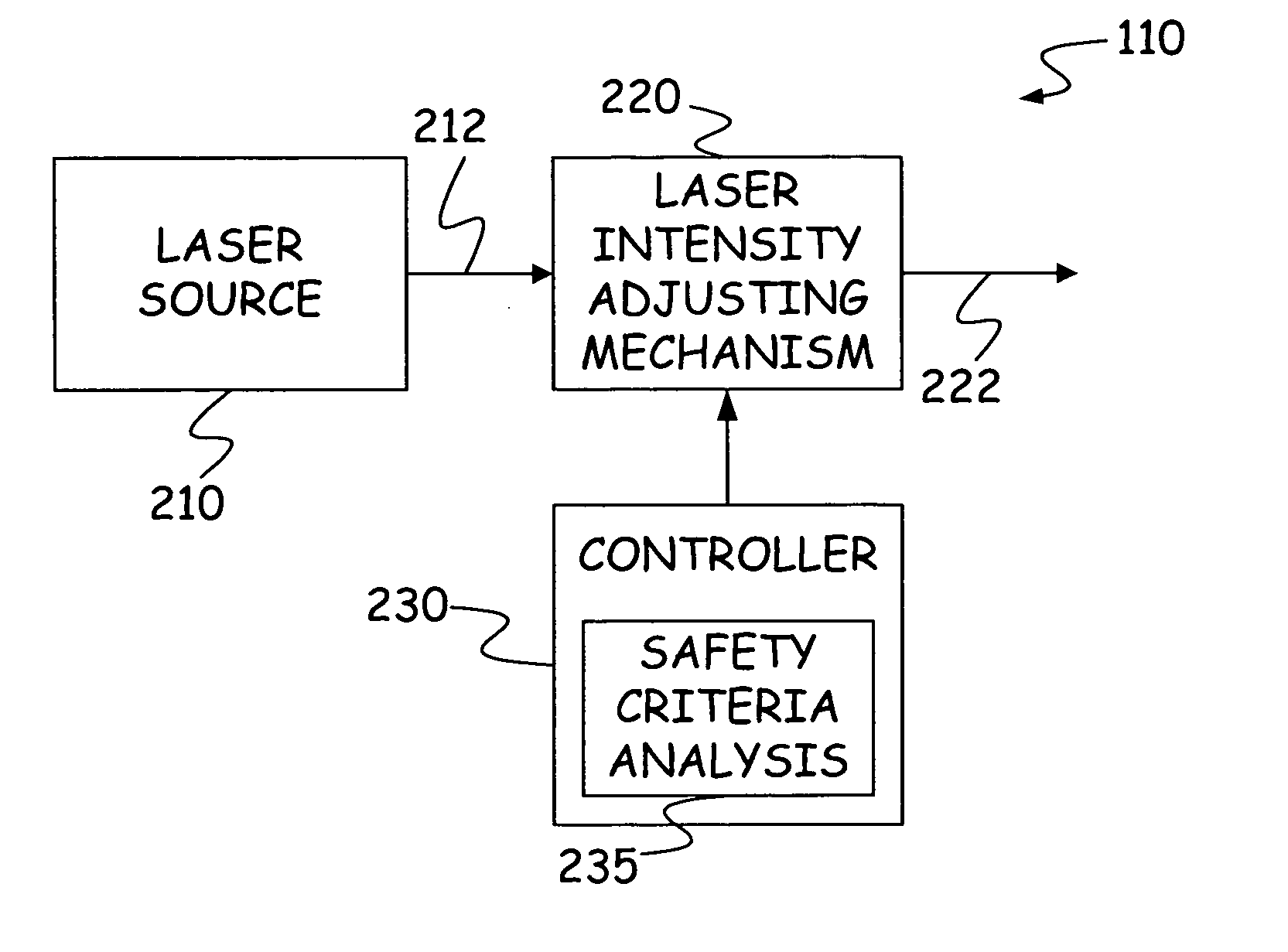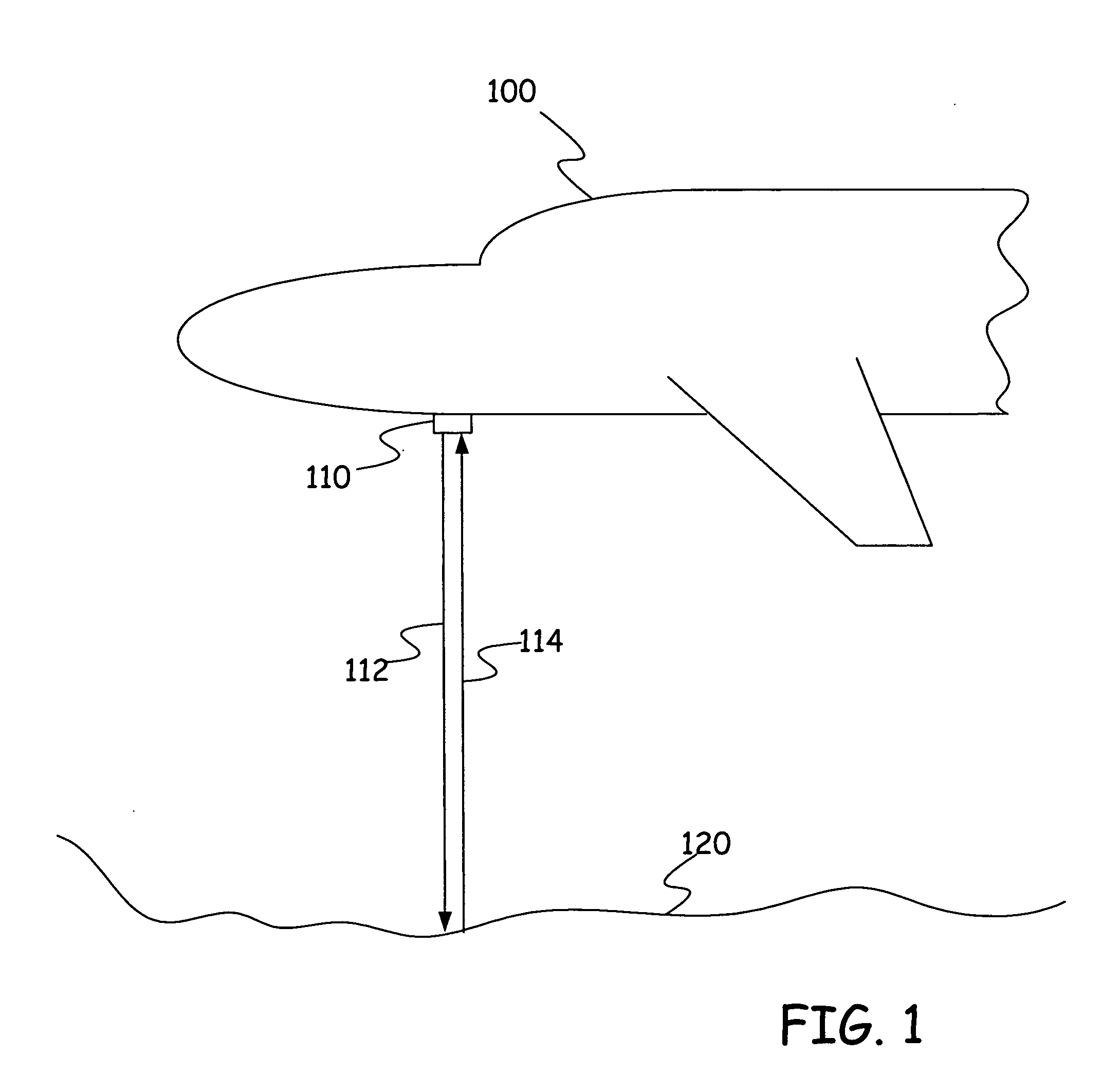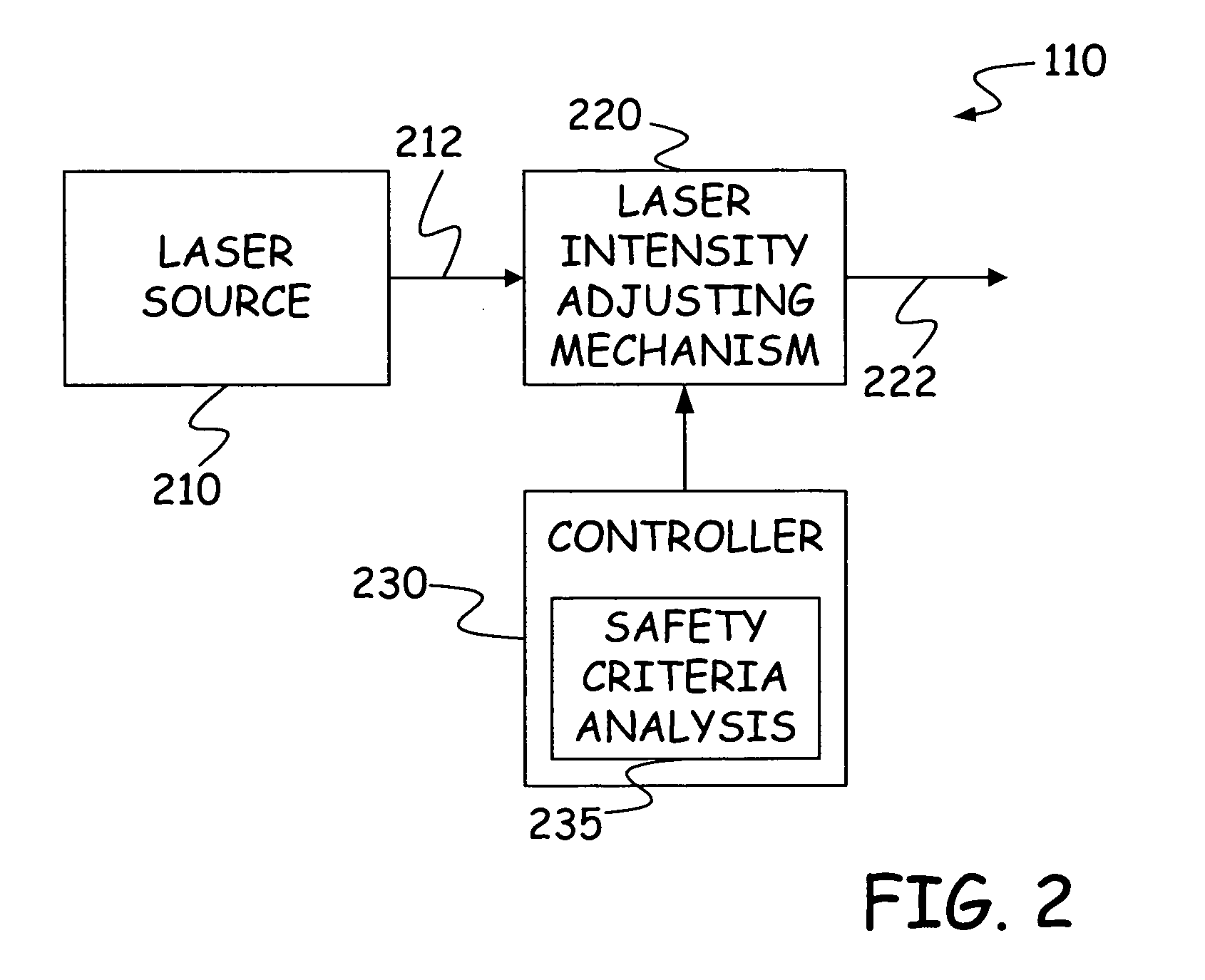Variable polarization attenuator
a variable polarization attenuator and attenuator technology, applied in the direction of distance measurement, instruments, surveying and navigation, etc., can solve the problems of eye hazards, ground crews could be exposed to eye hazards, and laser types used
- Summary
- Abstract
- Description
- Claims
- Application Information
AI Technical Summary
Benefits of technology
Problems solved by technology
Method used
Image
Examples
Embodiment Construction
[0013]FIG. 1 is a diagrammatic illustration of an aircraft 100 with a laser transmitting system 110 in accordance with disclosed embodiments. Laser transmitting system 110 is, in exemplary embodiments, a lidar system, for example a laser altimeter system. This type of laser transmitting system 110 can be used to transmit a laser beam 112 toward a surface 120 (for example the ground, a structure or other types of surfaces). By detecting the reflected energy 114, system 110 can detect the presence of surface 120. Based upon the timing between transmission of laser beam 112 and detection of reflected energy 114, a range or distance between system 110 (and thus aircraft 100) and surface 120 can be estimated using well known techniques.
[0014] As noted above, lidar systems frequently use laser sources that emit light in the visible and near infrared wavelengths, which can be an eye hazard if the beam intensity is too high. On the other hand, if the beam intensity is not high enough at hi...
PUM
 Login to View More
Login to View More Abstract
Description
Claims
Application Information
 Login to View More
Login to View More - R&D
- Intellectual Property
- Life Sciences
- Materials
- Tech Scout
- Unparalleled Data Quality
- Higher Quality Content
- 60% Fewer Hallucinations
Browse by: Latest US Patents, China's latest patents, Technical Efficacy Thesaurus, Application Domain, Technology Topic, Popular Technical Reports.
© 2025 PatSnap. All rights reserved.Legal|Privacy policy|Modern Slavery Act Transparency Statement|Sitemap|About US| Contact US: help@patsnap.com



